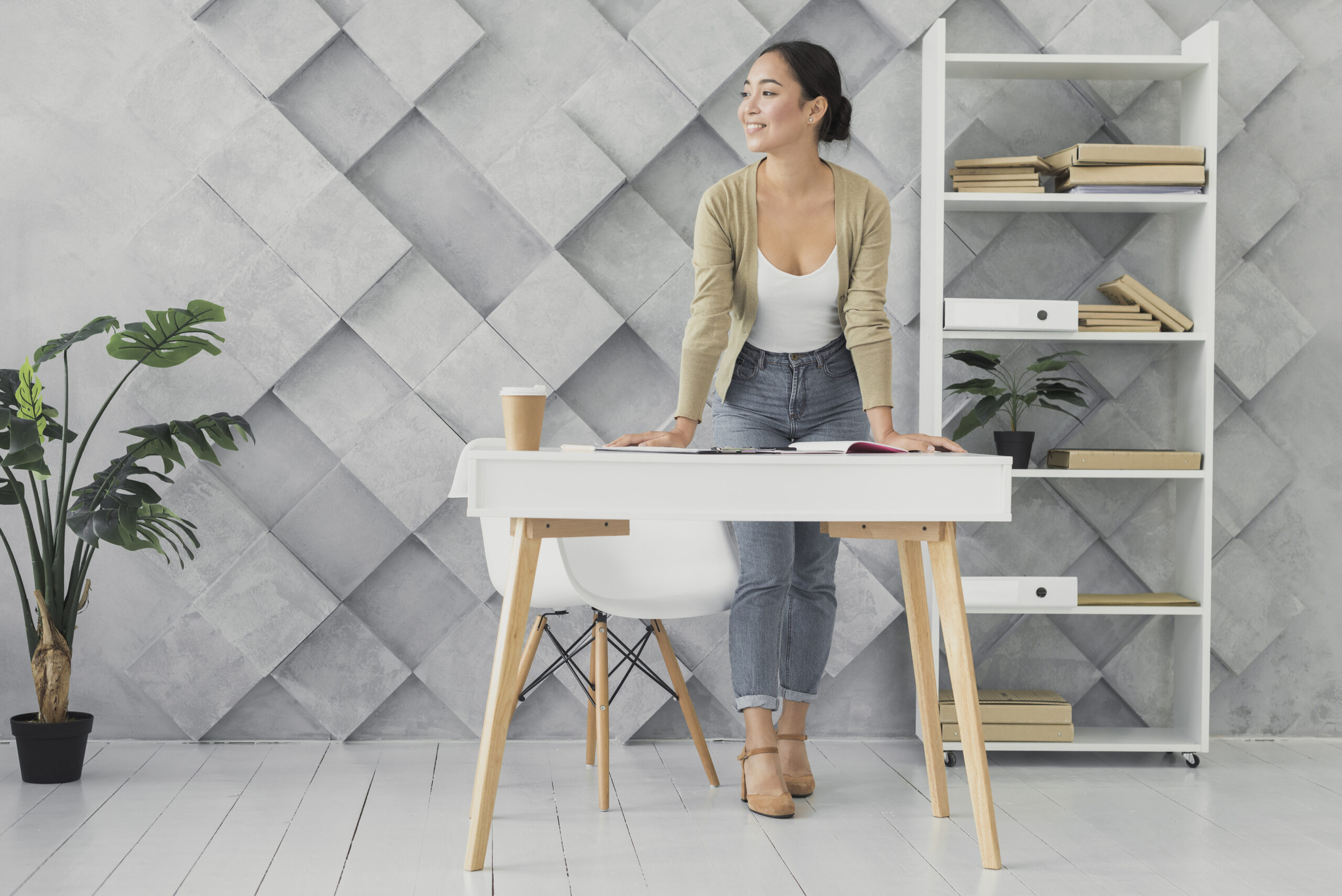
Standing Desks for Better Posture and Reduced Back Pain
In today’s sedentary lifestyle, where most of them spend long hours sitting at desks, back pain and poor posture have become common issues. The introduction of a standing desk has revolutionised the way individuals work.
These pieces of furniture provide the flexibility to switch between sitting and standing positions, allowing users to find the right balance and alleviate the strain on their backs. This article explores various types.
Various Types Of Standing Desks
Manual: It is the most basic type. It features a simple design and relies on manual adjustments to switch between positions. These pieces of furniture often come with adjustable legs that can be lowered or raised to accommodate different heights. While they require some effort to adjust, they are cost-effective and suitable for individuals who prefer a simple setup without any complex mechanisms.
Electric: It offers the convenience of motorised adjustments at the touch of a button. It comes with an electric motor that smoothly raises or lowers the height, allowing users to transition between positions effortlessly. It is known for its ease of use, precision, and customisation options. It often comes with programmable height settings, enabling users to save their preferred heights for quick adjustments.
Adjustable Height Standing Desk Converters: They offer a practical solution for individuals who already have a standard sitting desk but want the flexibility of a standing workstation. These converters are designed to be placed on top of an existing one, transforming it into a height-adjustable standing desk. These pieces of furniture come in various sizes and designs, accommodating different workspace configurations and equipment setups.
Typically, they feature a separate platform for the keyboard and mouse, allowing for ergonomic positioning of the hands and wrists. To adjust the height, most converters utilise a gas spring or pneumatic lift mechanism. This mechanism enables smooth and effortless height changes, allowing users to find their optimal standing position quickly. Some may also offer additional features like tilting keyboard trays or built-in cable management to enhance functionality and organisation.
Ensure that it can safely support your equipment and maintain stability during height adjustments. Additionally, check for ergonomic features like adjustable monitor stands or tilt options to optimise the viewing angle and reduce strain on the neck and eyes.
Mechanical/Winder-Operated: It provides an alternative to electric or manual adjustment mechanisms. These pieces feature a winder or crank handle that users can rotate to raise or lower the height. The mechanical system uses gears or pulleys to facilitate smooth and controlled height adjustments. While they require manual effort, winder-operated products offer a cost-effective option for individuals who prefer a mechanical solution over electric or manual ones.
Tech-Adjustable: It combines modern technology with ergonomic design to provide users with advanced features and seamless adjustments. These pieces of furniture often feature electronic controls, touchscreens, or smartphone applications that allow users to adjust the height with precision and convenience.
Fixed Height: It has a set height that cannot be altered. It is designed to cater to users who prefer a consistent setup. It is available in various ergonomic designs, offering a stable and dedicated workspace. It is often constructed with sturdy materials, ensuring durability and longevity.
It can be a suitable choice for individuals who do not require frequent adjustments throughout the day. Additionally, it is typically more affordable than their adjustable counterparts.
Conclusion:
Standing desks have gained popularity as a solution to combat back pain and poor posture caused by prolonged sitting. With various types available in the market, individuals have the flexibility to choose the one that suits their needs and preferences. Manual and electric ones provide adjustable height options, while converters and adjustable attachments offer customisation. Ultimately, investing in one can lead to improved posture, reduced back pain, and a healthier lifestyle overall.


